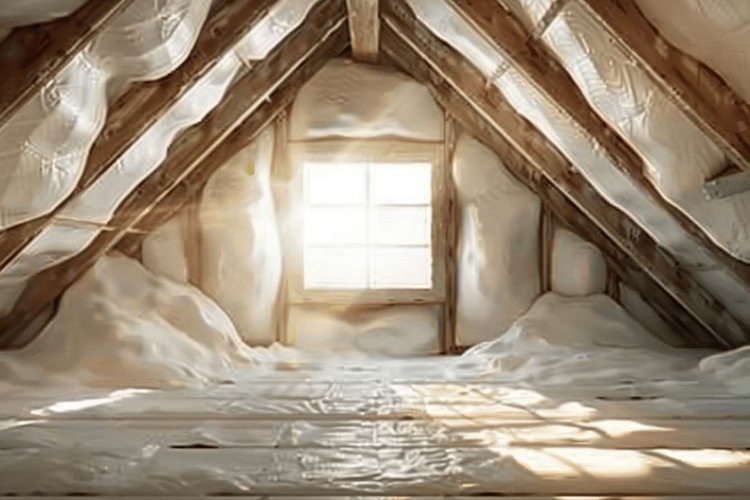Prefabricated Homes – Innovative and Sustainable Solutions
Prefabricated homes are reshaping residential construction by shifting much of the building process into controlled factories, reducing waste and speeding up timelines. For households in the United States, this approach can improve quality, support energy efficiency, and offer design flexibility. Here’s how modern prefab delivers innovative and sustainable solutions without sacrificing comfort or style.

Prefabricated homes bring assembly-line precision to housing by manufacturing modules or panels in a factory and completing installation on site. This method minimizes weather-related delays, improves quality control, and reduces neighborhood disruption compared with conventional builds. In the U.S., advances in materials, digital design, and energy systems are helping homeowners achieve lower-impact living while meeting local codes and climate demands in their area.
What defines a Luxury Prefab Home?
A Luxury Prefab Home emphasizes elevated design and performance rather than just finishes. Hallmarks include architect-led floor plans, generous natural light, carefully engineered building envelopes, and premium materials such as cross-laminated timber (CLT), engineered wood, or steel frames. Many high-end models integrate smart-home systems, zoned heating and cooling, whole-house ventilation, and prewiring for solar and battery storage. The result is a residence that feels bespoke while benefiting from factory precision.
In practice, luxury within prefabrication often means extensive customization. Homeowners can work with designers to tailor layouts, select kitchen and bath specifications, and choose façade systems that align with regional aesthetics—from coastal cladding to mountain-ready siding. Because much of the structure is completed off-site, installation can be planned around local services in your area, coordinating cranes, foundations, and inspections to streamline timelines and reduce on-site waste.
What are the advantages of prefab homes?
The advantages of prefab homes start with predictable quality. Factory settings make it easier to protect materials from moisture, standardize workmanship, and verify specifications before delivery. This contributes to durable assemblies, tighter envelopes, and consistency from one unit to the next. For homeowners, that often translates to fewer surprises during construction and improved performance after move-in.
Speed is another benefit. With site work (like foundations and utilities) happening in parallel with factory production, schedules can compress compared with fully site-built projects. Reduced on-site time also limits noise and disruption for neighbors. Sustainability gains are notable as well: precision cutting decreases material waste, transportation can be optimized to reduce trips, and high-performance envelopes help lower operational energy use when paired with efficient equipment.
Resilience is increasingly important across U.S. climates. Prefabricated assemblies can be engineered for seismic zones, heavy snow loads, high-wind regions, and wildfire-prone areas by specifying appropriate structural connectors, ember-resistant vents, and exterior materials. Combined with low-VOC finishes and balanced ventilation, many prefab designs also support healthier indoor air quality.
Which construction innovations matter?
Modern prefabrication leverages digital and industrial techniques that elevate design and execution. Building Information Modeling (BIM) and digital twins coordinate architecture, structure, and mechanical systems before fabrication. Design for Manufacture and Assembly (DfMA) translates plans into standardized components, allowing CNC cutting, panelization, or volumetric modular construction that fits together on site with fewer errors.
Materials technology is moving quickly. Engineered wood products like CLT and laminated veneer lumber provide strength with lower embodied carbon than many conventional alternatives. Advanced insulation assemblies—continuous exterior insulation, high-performance windows, and airtight membranes—support energy efficiency. Mechanical innovations such as variable-speed heat pumps, heat-pump water heaters, and energy recovery ventilators (ERVs) reduce energy demand while maintaining comfort.
Sustainability features are increasingly integrated by default. Many prefab homes are designed for all-electric operation, prewired for rooftop solar, and detailed for airtightness targets that support certifications such as ENERGY STAR or Passive House principles. Water-efficient fixtures, rainwater readiness, and low-maintenance exterior materials further reduce environmental impact. On the logistics side, just-in-time delivery and precise staging help minimize site traffic and shorten installation windows in your area.
Conclusion Prefabricated homes combine industrial rigor with architectural flexibility, helping U.S. homeowners achieve durable, efficient, and individually tailored spaces. By shifting construction to controlled environments and embracing innovations in materials, digital coordination, and building science, prefab offers practical pathways to lower-impact living. Whether aiming for a Luxury Prefab Home or a compact, efficient design, today’s solutions demonstrate how sustainability and comfort can align without compromising quality or aesthetics.




